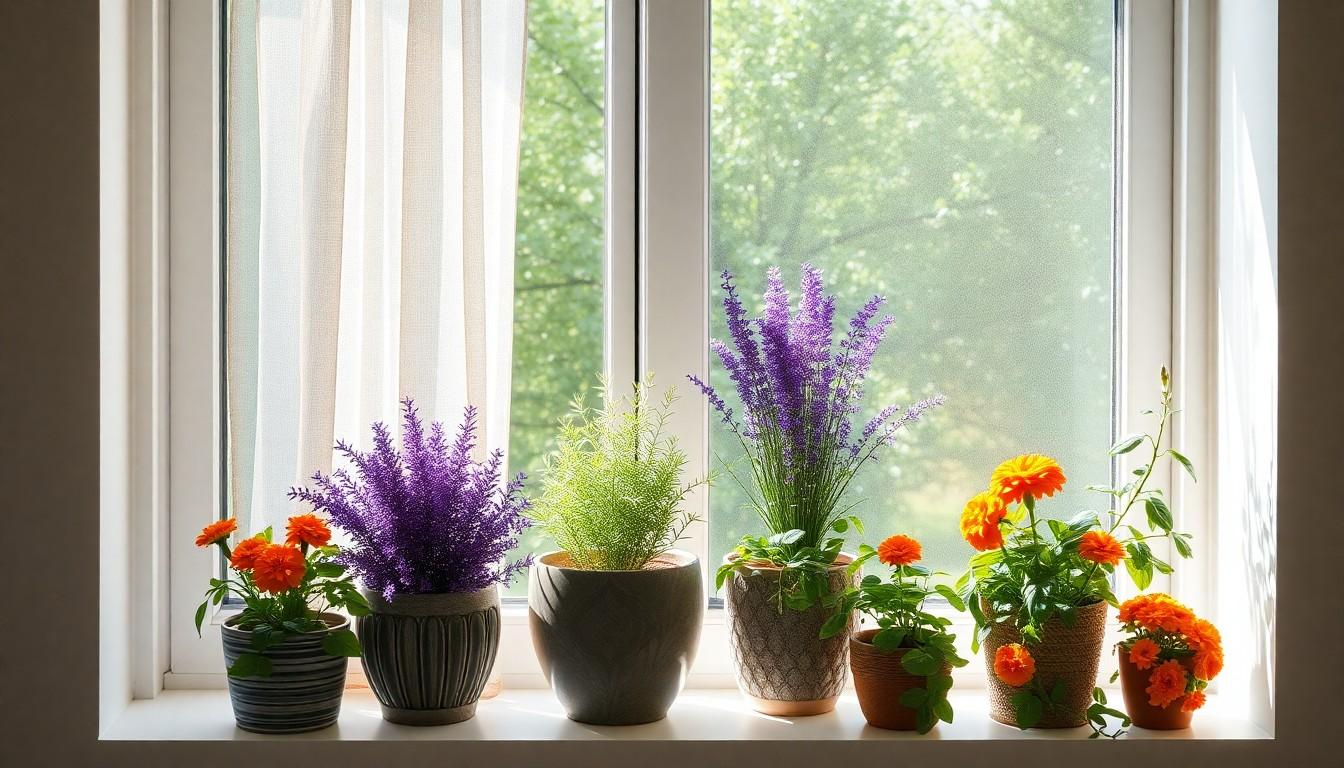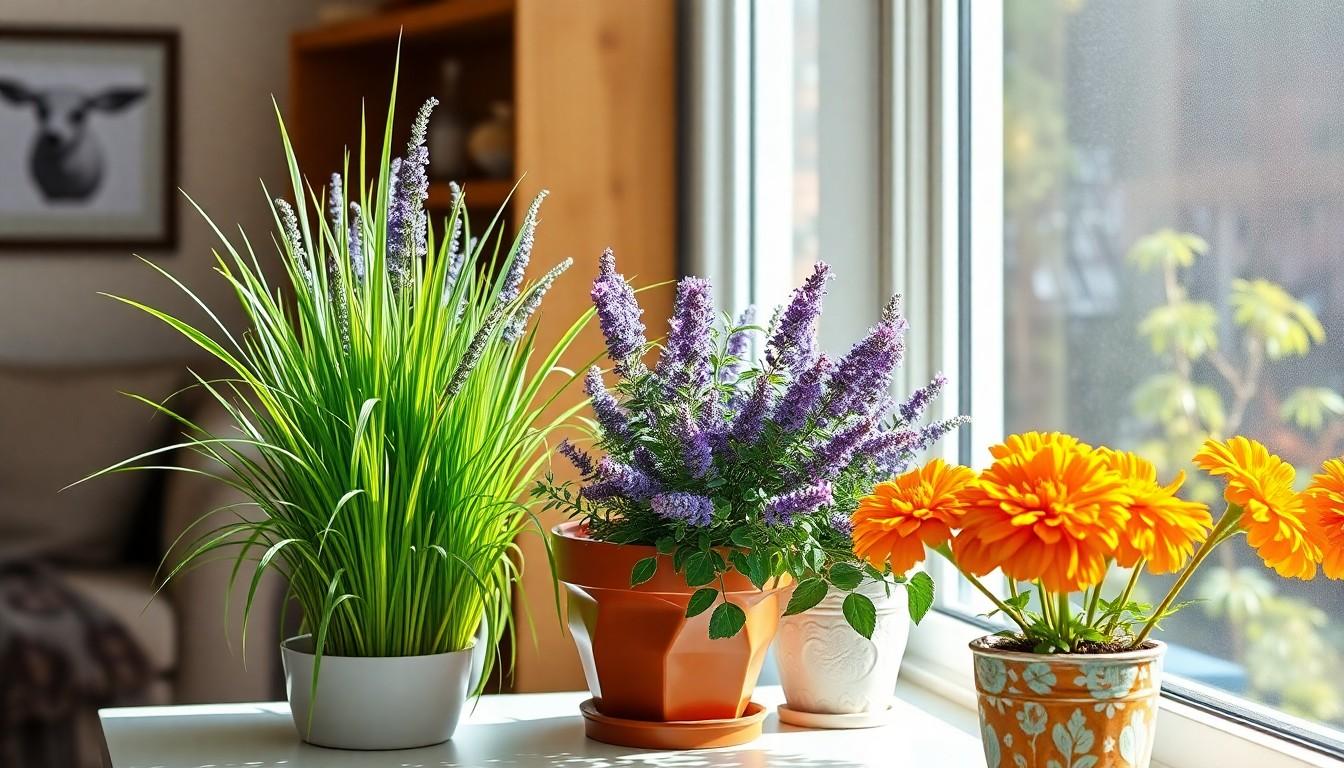Phone:
(701)814-6992
Physical address:
6296 Donnelly Plaza
Ratkeville, Bahamas.

When it comes to battling those pesky mosquitoes indoors, who knew that Mother Nature had the ultimate secret weapon? Enter mosquito repellent plants—your new green allies in the fight against buzzing intruders. Not only do these plants add a touch of charm to any room, but they also keep those irritating bloodsuckers at bay.
Using mosquito repellent plants indoors offers several advantages beyond just keeping pests at bay. These benefits include natural pest control and improved air quality.
Natural pest control presents significant advantages. Mosquito repellent plants, such as citronella and lavender, contain oils that repel mosquitoes effectively. Exposing these plants encourages an environment that actively discourages mosquito presence. Specific compounds within these plants thwart mosquito attraction, providing homeowners with a safer alternative to chemical repellents. Additionally, placing multiple plants around a room enhances their overall effectiveness.
Air purification improves indoor environments considerably. Certain mosquito repellent plants, including rosemary and mint, absorb harmful toxins from the air. These plants contribute to overall air quality while releasing oxygen, creating a healthier living space. Moreover, individuals benefit from fresher air due to the presence of these plants. Keeping these plants indoors regularly helps maintain clean air, which promotes well-being for everyone in the home.

Several popular plants effectively repel mosquitoes while enhancing indoor spaces. These plants consist of natural oils that deter these pests and contribute to better air quality.
Citronella stands out as a top choice for mosquito control. This grass produces an oil that masks scents that attract mosquitoes. Placing citronella in sunny indoor spots encourages thriving growth, ensuring maximum pest-repelling benefits. Potting it in containers makes it easy to move for optimal light exposure. Regular watering keeps the plant healthy while releasing its natural fragrance into the air. Overall, citronella not only beautifies spaces but also works well as a natural deterrent.
Lavender brings a delightful aroma alongside its pest-repelling qualities. Known for its soothing scent, it effectively keeps mosquitoes at bay. This plant flourishes in pots or larger indoor gardens, thriving with plenty of sunlight. Purple blooms add an appealing touch to any room. Watering it moderately fosters a healthy environment, enhancing its air-purifying capabilities. Thus, lavender serves as a fragrant dual-purpose plant that benefits both aesthetics and pest management.
Marigold is another impressive option for indoor mosquito control. These vibrant flowers contain compounds that repel mosquitoes and other pests. Displaying marigolds in sunny areas promotes vigorous growth, ensuring they remain effective deterrents. Their bright colors add an inviting charm to any space. Marigolds are low-maintenance plants that require minimal watering, making them perfect for busy households. By incorporating marigolds indoors, individuals gain both beauty and natural protection against mosquitoes.
Successfully growing mosquito repellent plants indoors requires attention to soil quality and lighting. These factors significantly influence plant health and efficacy in repelling insects.
Select a well-draining potting mix for optimal growth. A blend containing peat moss and perlite ensures proper aeration and moisture retention. Avoid heavy soils, as they retain excess water, which can lead to root rot. Consider adding organic matter, like compost, to enrich nutrient content. Each plant may have specific requirements; for instance, citronella thrives in slightly acidic soil, while lavender prefers alkaline conditions. Regularly check soil moisture levels to prevent over-watering, and adjust care according to each plant’s needs.
Provide adequate light for mosquito repellent plants to flourish. Most of these plants require bright, indirect sunlight for several hours daily. Placing them near windows is beneficial, but be cautious of direct sunlight, which may scorch the leaves. Grow lights can supplement natural light during dark days, ensuring consistent exposure. Make adjustments based on individual plant preferences; for example, rosemary enjoys full sun while mint tolerates partial shade. Monitor plant growth and adjust light conditions accordingly to promote healthy development.
Incorporating mosquito repellent plants into home decor creates a harmonious blend of aesthetics and functionality. These plants, such as citronella and lavender, serve as beautiful centerpieces while simultaneously repelling unwanted bugs. Each species adds texture and color that complements various interior styles.
Placement of these plants matters. Positioning citronella near sunny windows enhances its growth and optimizes its mosquito-repelling properties. A cluster of lavender can brighten a dark corner while providing delightful fragrance and air purification benefits. Using marigold, known for its vibrant flowers, also adds a pop of color, making it an excellent decorative choice.
Integrating pots and planters that reflect the style of the room further enhances the decor. Terracotta pots can evoke a rustic charm, while sleek ceramic containers suit modern aesthetics. The choice of pots creates visual interest while ensuring the plants receive the care they need.
Grouping plants creates an inviting atmosphere. Arranging different mosquito repellent plants together forms an eye-catching display that promotes natural pest control. This strategic layout also encourages health benefits, as the plants work together to purify air quality in shared spaces.
Consider hanging planters for limited space. Macrame hangers offer a stylish way to display plants while maximizing floor area. A collection of trailing mint can soften room edges while infusing fresh scents, providing a dynamic aspect to decor without sacrificing space.
Ultimately, the fusion of decor and practicality simplifies pest management. Enhancing indoor aesthetics and ensuring a mosquito-free environment makes these plants ideal companions, enriching both comfort and style in any home.
Incorporating mosquito repellent plants into indoor spaces offers a practical and aesthetically pleasing solution for pest control. These plants not only enhance the beauty of a home but also improve air quality while keeping mosquitoes at bay. By carefully selecting and nurturing plants like citronella lavender marigold rosemary and mint homeowners can create a healthier environment.
The right placement and care ensure these plants thrive and effectively serve their dual purpose. Embracing this natural approach to pest management enriches living spaces while promoting well-being. With the right knowledge and attention anyone can enjoy a mosquito-free home filled with vibrant greenery.